#saltsjöbaden
Explore tagged Tumblr posts
Text

I Saltsjöbaden, Stockholm, skapar Lynx Ute fastighetsboxar på stativ en harmonisk plats för posthantering utomhus. Här står en man och kollar sin post, med havets brus i bakgrunden. Dessa eleganta och praktiska boxar förvandlar en enkel vardagsrutin till en avkopplande och njutbar stund.
#Saltsjöbaden#Stockholm#LynxUte#FastighetsboxarPåStativ#Skyddsdörrar#PostMoment#SäkerPosthantering#HavetsBrus#fastighetsboxar
0 notes
Video
A Golden Font by Henrik Sundholm Via Flickr: The baptismal font in Uppenbarelsekyrkan, a church in Tattby outside Stockholm, Sweden.
#bokeh#gold#golden#metal#baptismal#font#vignette#shadows#dark#round#circle#church#interior#architecture#uppenbarelsekyrkan#saltsjöbaden#tattby#nacka#50mm#light#reflections#reflecting#dof#depth of field#flickr
0 notes
Photo

#baggensfjärden #Saltsjöbaden #Ingarö #archipelago #stockholmarchipelago #skärgård #stockholmsskärgård #sunset_pics #raw_community #sweden_photolovers #landscape #landscapephotography #slowphotography #landscape_captures #awesome_earthpix #natureaddict #sealife #water_of_our_world #theglobewanderer #welivetoexplore #livingonearth #ig_sweden #visitsweden #swedenshots #ig_scandinavia #fujifeed #myfujifilm #fujixclub #fujiframez #fujifilmxseries
0 notes
Text
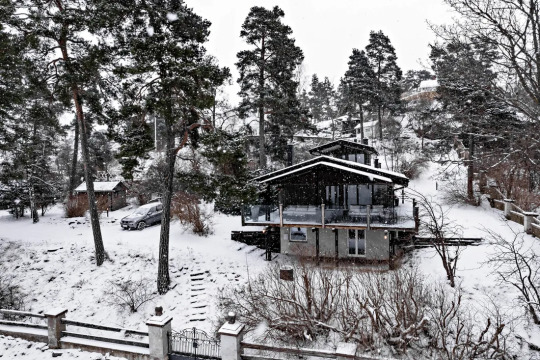
If you like moody decor, this Swedish chalet just outside of Stockholm, is an inspiration. Renovated in 2017, it has 3-4bds, 3ba, 2 kitchens, 14,000,000 SEK / $1,356,901.
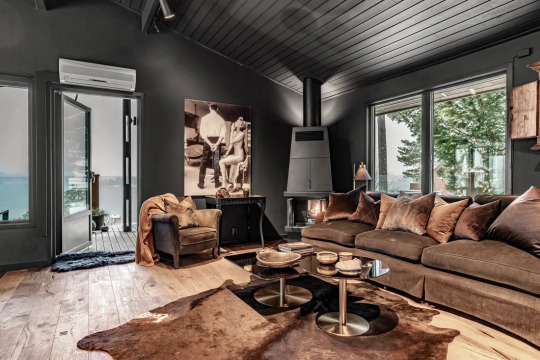
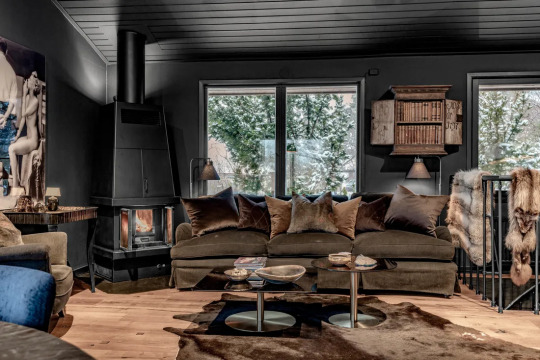
The home is painted black throughout, with brown decor, and light wood floors.
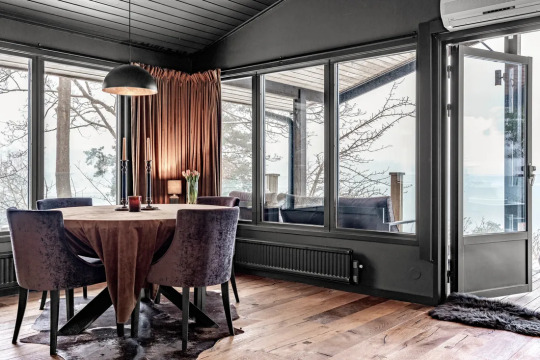


The main kitchen has an eat-in area, contemporary cabinetry with black counters, and a backsplash to match the walls.
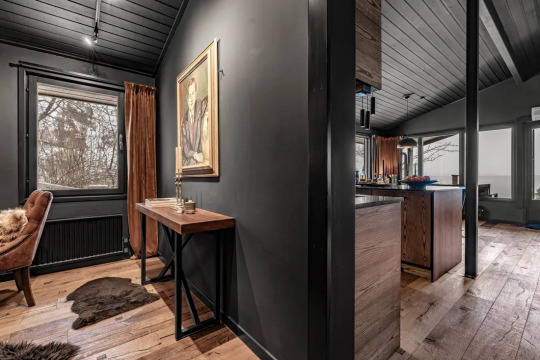

On the other side of the kitchen wall is a cute little home office and an entrance door with a convenient coat closet.
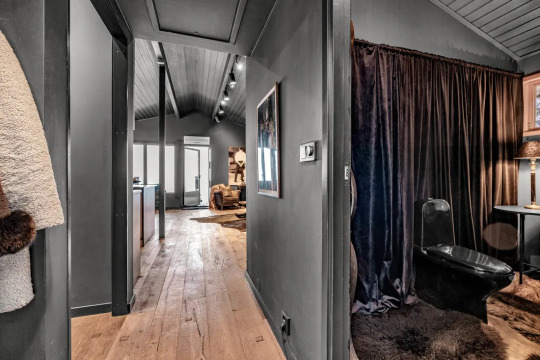

There's also a large and decorated powder room.


Stairs to the lower bedroom level are in the living room and come down to a hall with clothing closet.
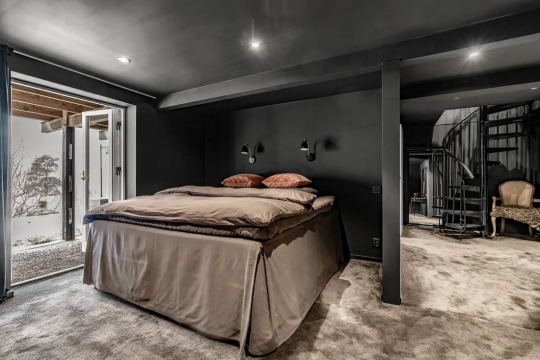

This is the only bedroom shown, so I would imagine that it's the primary.


Next to it is a large bath with shower.

This is a flex space that can be used for almost anything.

Nice dock for the summer.

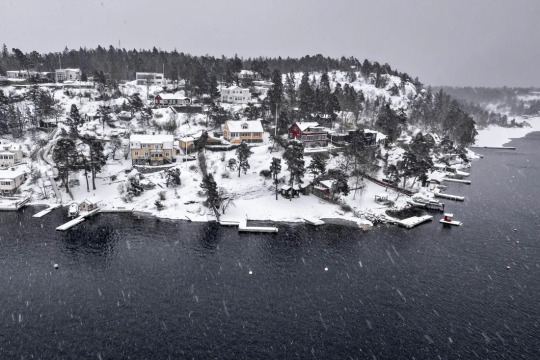
The home has a lovely large deck and is situated near the water for summer and winter activities.
88 notes
·
View notes
Text

Models wearing swimwear and beachwear at a show in Saltsjöbaden, 1930. Photo by Erik Holmén.
(source: Nordiska Museet)
12 notes
·
View notes
Text
såg en lägenhet för under miljonen men alltså.. att behöva bo i saltsjöbaden......... drar en gräns där
3 notes
·
View notes
Text
Der klassische Monat mit Roberto Roganti: Tor Bernhard Wilhelm Aulin
1 note
·
View note
Text
Marockansk Chabaanafest i Grünewaldvillan
Chaabana Marockansk fest för att fira den internationella kvinnodagen i förväg. Plats Grünewaldvillan i Saltsjöbaden. Arrangemang HOPE föreningen. Hope föreningen bjöd att störra antal gäster till en dag/kvälls fest för att fira den internationella kvinnodagen i Marockansk stil. Det bjöds på mycket mat, Dadlar, nötter, mängder av goda kakor, samt grillade Vaktel med vitlök och linser. Pasta…

View On WordPress
0 notes
Text
Ytterligare en vecka i arbetslöshetens tecken kan läggas till handlingarna. Det låter som en ganska tråkig vecka egentligen, eller hur?! Men jag har haft fullt upp, så fullt upp att jag fått tacka nej till saker eftersom de krockat med varandra. Jag har betat av två filminspelningar, ett möte med min chef på extrajobbet och sedan faktiskt varit bortrest torsdag till fredag. Eller bortrest och bortrest, vi har testat en natt på Grand hotell i Saltsjöbaden – så vi lämnade aldrig ens Stockholmsområdet och jag kunde med gott samvete räkna mig som tillgänglig för arbetsmarknaden medan jag fick en lyxig hotellvistelse. Lite lyx i vardagen måste man ju ha, även som arbetssökande. Enligt reglerna får jag inte resa utomlands hur som helst, men jag har inte hittat något i reglerna om säger att jag inte får röra mig inom Stockholms län. Och skulle en intervju dykt upp med kort varsel, så hade jag med lätthet kunna åtagit mig den eftersom avståndet var så litet.
Jag har helt enkelt fullt upp och kommande vecka är nästintill lika fullbokad, men anställningsintervju, filminspelning och barnvakteri. Givetvis vid sidan av att fortsätta söka jobb och vara aktiv på Arbetsförmedlingen.
0 notes
Text

Hélène Schjerfbeck (1862-1946) - Retrato de um homem
Helena Sofia (Helene) Schjerfbeck é uma pintora finlandesa. Criança prodígio, Helene Schjerfbeck ingressou na escola de desenho da Associação de Artes de Helsinque aos onze anos, cujas aulas foram pagas por Adolf von Becker, que reconheceu seu talento. Lá ela conheceu Helena Westermarck. Em 2 de fevereiro de 1876, o pai de Helene Schjerfbeck morreu de tuberculose e sua mãe alojou-se em pensionatos para garantir o sustento da família. Um ano depois, Helene se formou na escola de desenho da associação artística. Ela continuou seus estudos na escola particular de Adolf von Becker. O professor G. Asp pagou suas taxas de estudo e Adolf von Becker ensinou-lhe pessoalmente técnicas de pintura a óleo francesa. Em 1879, aos 17 anos, Helene Schjerfbeck ganhou o terceiro prémio num concurso organizado pela Associação Finlandesa de Artes. No final de 1880, graças a uma bolsa, continuou a sua formação académica em Paris, nas raras oficinas gratuitas abertas às mulheres, pintou com Helena Westermarck, depois seguiu os ensinamentos de Léon Bonnat na escola de Mme Trélat de Vigny . Em 1881 ela estudou novamente na academia Colarossi com Helena Westermarck. Em 1882 e 1884, expôs no salão parisiense da Champs-Élysées. Obtendo outra bolsa, passou alguns meses em Meudon e alguns outros em Concarneau. Ela retornou brevemente à Academia Colarossi antes de retornar à mansão da família Adlercreutz na Finlândia. Viajou para a Finlândia para pintar e estudar. Em 1884, ela voltou com Helena Westermarck para a academia Colarossi para lá trabalhar. Em 1887 ela foi para St Ives na Cornualha. Lá ela pintou "O Convalescente" que ganhou a medalha de bronze na Exposição Universal de Paris de 1889. Optou então por um naturalismo servido por grande virtuosismo técnico, obtendo sucesso precoce. Este período é marcado por inúmeras viagens: Bretanha, Inglaterra, Rússia, Itália. Na década de 1890, Helene Schjerfbeck lecionava regularmente na escola de desenho da associação de arte. Em 1901, Schjerfbeck ficou doente demais para lecionar e abandonou seu cargo em 1902. Ela então se mudou para Hyvinkää para cuidar de sua mãe. No final do século XIX, numa Finlândia que lutava pela independência, a sua recusa ao romantismo nacional, liderada por Akseli Gallen-Kallela, marginalizou-a. Os problemas de saúde desde a infância levaram-na a instalar-se em Hyvinkää, a cerca de cinquenta quilómetros de Helsínquia, de onde esteve ausente durante quinze anos. É neste isolamento desejado que desenvolve a sua própria linguagem, purificando a sua escrita com base no realismo a que se mantém fiel. Esta ascese pictórica baseia-se na atenção ao seu ambiente, pintando aqueles que a rodeiam, os trabalhadores da fábrica local ou mais tarde as enfermeiras do sanatório, paisagens e naturezas-mortas íntimas que são como tantas meditações ecoando os autorretratos onde, no final de sua vida, ela acompanha o progresso da idade, da doença e da aproximação da morte. Ela morreu no sanatório Saltsjöbaden, na Suécia, país onde se refugiou durante a Guerra de Continuação, o segundo conflito armado entre a Finlândia e a URSS.
1 note
·
View note
Text

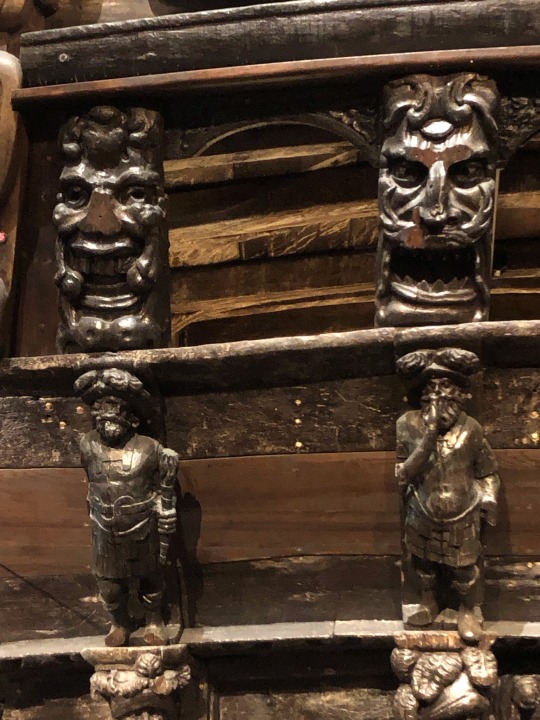


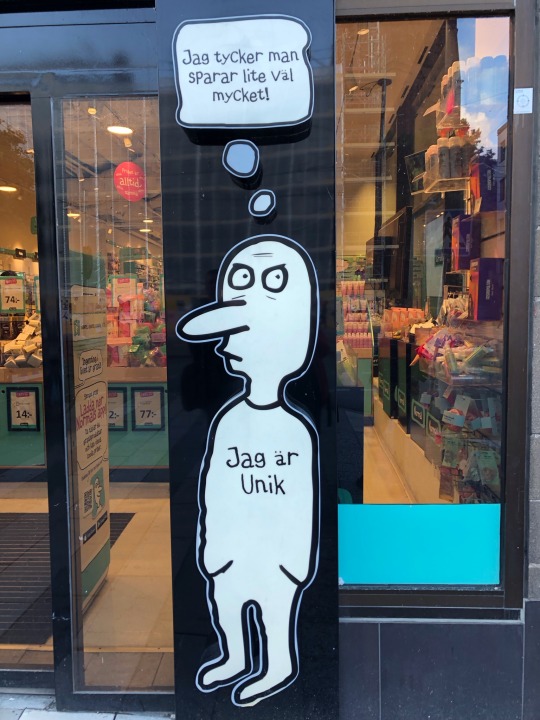

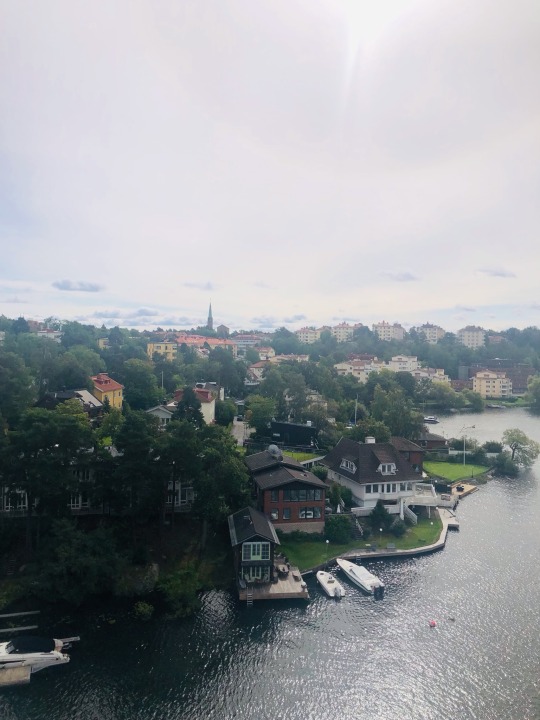

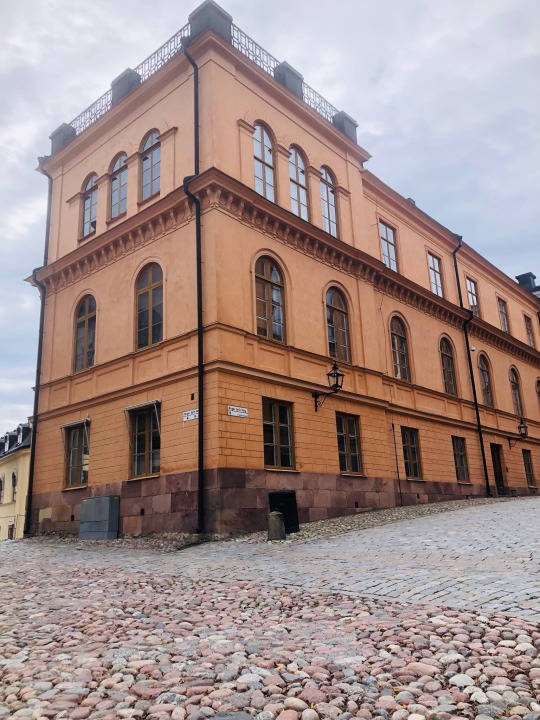
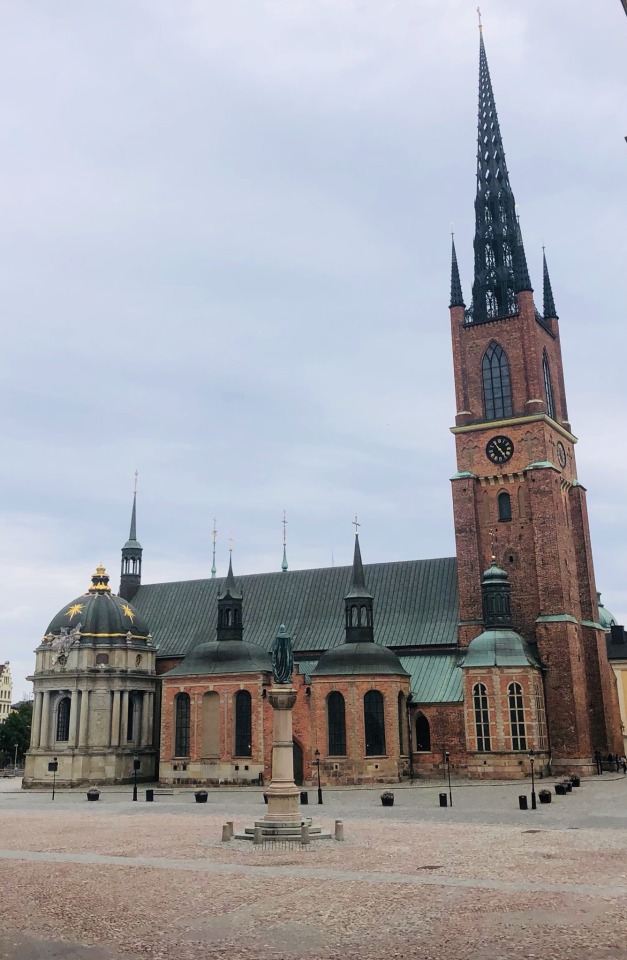
3 september
Als er een hitparade zou bestaan van steden die ik bezocht heb zou Stockholm met superstip binnenkomen. Want wat is het heerlijk toeven in de Zweedse hoofdstad. De vrijdagochtend van de eerste september ging gepaard met gestaagd regenval maar 's middags was het nagenoeg droog en was het tijd om meer te ontdekken. Op naar Djurgården, één van de eilanden van Stockholm. Je kunt er een attractiepark bezoeken maar ook tal van musea, ook het drukst bezochte museum van Scandinavië ligt er…het Vasamuseum, gelukkig viel het met de drukte wel mee en was het aanschouwen van het Vasaschip goed te doen. Heel imponerend is het. En vele malen groter dan ik van te voren gedacht had. Het schip dat op 10 augustus 1628 bij de eerste vaart vanuit de Stockholmer haven al zonk, en meer dan driehonderd jaar tot 1961 op de bodem lag. Gelukkig is het al die tijd goed geconserveerd gebleven. Een hele prestatie trouwens om het zo tentoon te stellen. Het schip ligt op een kiel er daarna is het gebouw erom heen getrokken.
Tegen de avond dan nog een lekkere wandeling gemaakt van zo'n 7 kilometer, en in de wijk Kungsholmen (= Koningseiland) in de Fleminggatan een leuke bar gevonden voor een lekker biertje van een halve liter. De prijs? Nou ja, ik denk dat het bij ons het laatste jaar zo explosief gestegen is dat je hier voor dat bier en flesje cola denkt dat valt wel mee die € 10,-.
*
Op zaterdag eerst een kijkje genomen rond het stadhuis, en inderdaad vooral aan de toren kun je zien dat het Enschedese stadhuis op het Stockholmse geïnspireerd is. Over Enschede gesproken er is zelfs een stadsdeel in Stockholm en dat heet Enske, slechts de a valt weg bij de Twentse versie. En was het ook niet de Enschedese band Teach-in die in 1975 het Eurovisiesongfestival won? Toch aardig wat overeenkomsten. In de middag een grote boottocht gemaakt en daarna ergens boven in de city me te goed gedaan in een visrestaurant. Het was heel smakelijk de spicy salmon met verfrissende groenten erbij.
*
Zondag
Op de söndag hier wordt ook gewoon de vuilnis opgehaald en is alles open en toch ook bij mijn fietstocht door de stad oogt het allemaal relaxt. Vanaf het hotel kwam ik langs kantoren, gevold door een wijk die wel wat weg heeft van de Bijlmer. Husby. Volgens de Zweedse politieraporten de gevaarlijkste wijk van het land, maar ja op zondagochtend zal het toch wel niet zo'n vaart lopen. Zo‘n tien jaar geleden braken hier grootschalige rellen uit. De flats hier gebouwd in de jaren '60 waren toen heel geliefd. Zweden dat 150 jaar geleden nog één van de armste landen van de wereld was, beleefde net zoals vele andere landen kort na de Tweede Wereldoorlog een 'Wirtschaftswunder‘ van een zeer agrarisch land werd het in korte tijd een sterke economie, met uiteraard veel woningsnood. En hoewel nu één van de rijkste landen ter wereld is de keerzijde dat mensen aan de onderkant van de samenleving natuurlijk altijd in dit soort wijken komen te wonen. Uiteraard gebeurde er verder niets en kwam ik daarna langs 'gewone‘ huizen. Gevolgd door een meer, kronkelende straten waar in de tuinen van de huizen met houten luiken appelbomen staan en op de hoeken van de pleinen de mensen lekker gebak met koffie nemen en ijs, gigantisch veel ijs. Door het schitterende centrum en uiteindelijk de mooie weg naar het strand van Saltsjöbaden.
En dat bij een heerlijke temperatuur van zo'n 18 graden.
0 notes
Text
Helena Sofia (Helene) Schjerfbeck (1862-1946) pintora finlandesa.

Conocida principalmente por sus obras realistas y autorretratos, aunque también realizó paisajes y bodegones. Nació en la ciudad costera de Ekenäs. A los 4 años cayó por las escaleras de la casa donde vivía y sufrió una lesión en la cadera que le impidió asistir a la escuela. Se considera esta como la probable causa de que comenzara a pintar, ya que además del tiempo de convalecencia que tuvo esta lesión, la misma la acompañaría toda la vida privándole de un estilo de vida físicamente activo.

Desde muy corta edad mostró poseer un gran talento, y a los 11 años ingresó en la Sociedad Artística Finlandesa, una escuela de dibujo (Adolf von Becker pagó sus estudios allí). En esta escuela, Schjerfbeck conoció a Helena Westermarck, Maria Wiik y Ada Thilen, manteniendo las 4 artistas una estrecha amistad durante el resto de sus vidas.

Cuando su padre murió de tuberculosis en 1876, su madre comenzó a alquilar habitaciones para conseguir dinero.

Un año después Helena terminó sus estudios de dibujo, y siguió formándose en la academia privada de Adolf von Becker. El profesor G. Asp pagó sus gastos en esta academia.

Con 17 años ganó el tercer premio en un concurso organizado por la Sociedad Artística Finlandesa, y en 1880 su trabajo se exhibió en una exposición anual de la misma. Ese verano, pasó un tiempo en una casa solariega propiedad de su tía materna. Allí pasó un tiempo dibujando y pintando a sus primas. Ese mismo año partió a París después de recibir una beca de viaje del Senado Imperial de Rusia.

En 1881 se inscribió en la Académie Colarossi.

Le otorgaron otra beca y ganó dinero al seguir participando en las exposiciones de la Sociedad Artística, además de hacer ilustraciones para libros.

En la década de 1890, comenzó a enseñar en Finlandia en la escuela de dibujo de la Sociedad Artística, pero en 1901 enfermó y un año después renunció a su puesto. Se mudó a Hyvinkää para seguir pintando y exponiendo mientras cuidaba de su madre ya anciana, que se había ido a vivir con ella.

En 1913, conoció al comerciante de arte Gösta Stenman que la ayuda a exponer en diversos lugares y le organizó otra exposición individual para ella en Estocolmo y en 1938 comenzó a pagarle un salario mensual.
Helena hablaba inglés, francés y alemán de forma fluida. Con el paso de los años, viajó menos, solo desplazándose por causas de fuerza mayor. En 1921 volvió a Hyvinkää. Durante un año, se mudó a una granja en Tenala para escapar de la Guerra de Invierno donde se enfrentaron la URSS y Finlandia, pero regresó a Ekenäs a mediados de 1940.
En 1944 se mudó al hotel balneario Saltsjöbaden en Suecia, donde continuó pintando activamente incluso durante sus últimos años a pesar de los estragos del cáncer.
Se le conocen dos amores en su vida pero nunca se casó ni tuvo descendencia.
Le ponemos cara con uno de sus múltiples Autorretratos.

Hay una película de 2020, sobre su última etapa de vida, Helene.
0 notes
Text
Gustav Kling klar för Torsby IF U
Torsby annonserade igår att man skulle presentera två nyförvärv och här är den första. Gustav Kling 17 år kommer närmast från Saltsjöbadens IF. Gustav går på skidgymnasiet på Stjerneskolan här i Torsby.

View On WordPress
0 notes
Text

Uppenbarelsekyrkan in Saltsjöbaden, 1909-13. Detail of the western chapel
#ferdinand boberg#carl milles#olle hjortzberg#filip månsson#stockholm#saltsjöbaden#sweden#Byzantium#national romanticism
91 notes
·
View notes
Photo

So, yesterday we were there sunbathing. Felt like a trip back in the 19th century. #saltsjöbaden #sea #trip #lunchinthesun #wonderful #old #vintage #swimming #sunbathıng #water #boat #hemester (à Saltsjöbaden) https://www.instagram.com/p/COz5caKJfQD/?igshid=vwz9fzwroak8
2 notes
·
View notes
